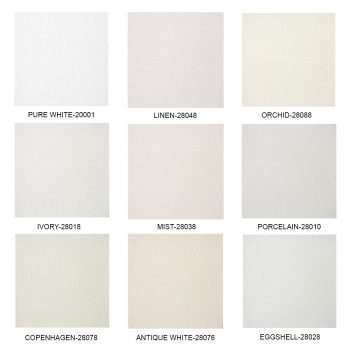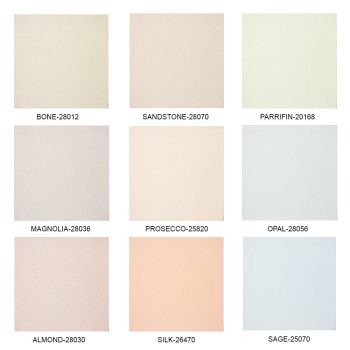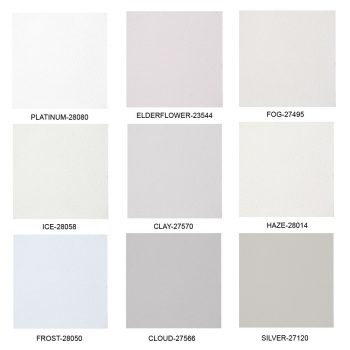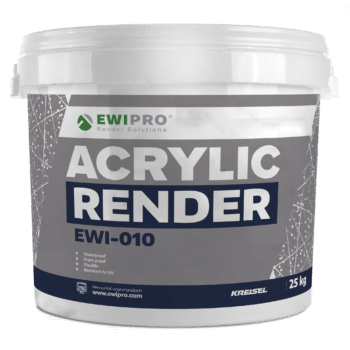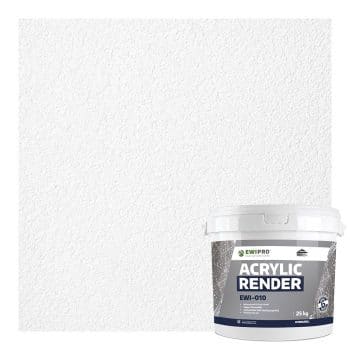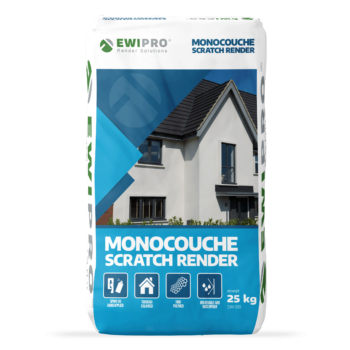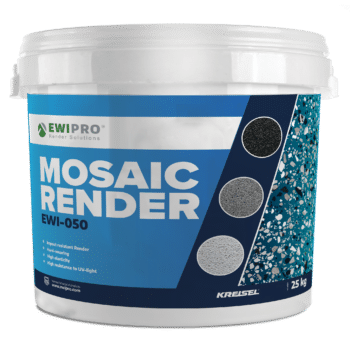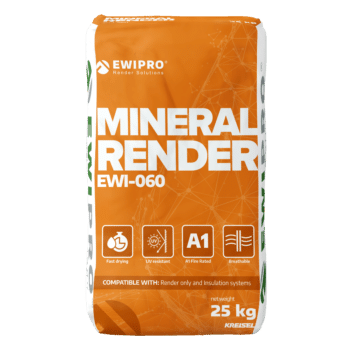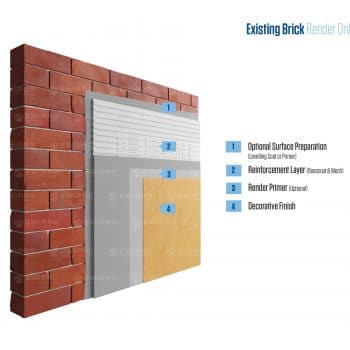Which Render Is The Best?
Which render is the best; a question our customers ask us almost daily. The answer is surprisingly complex! All types of render have specific features and benefits that may be more suitable for different projects. Perhaps performance is the most important to you. Alternatively, you may be looking to mimic some heritage features. Regardless of the aim, EWI Store will have the right solution for you. However, let us try and establish which render is the best when all is taken into account.
What is render?
Render is a form of plaster used primarily for external walls. As a result, much of the industry refers to render as topcoat or topcoat render. The reason for this is that it tends to be the last layer of material to complete the assembly. However, some will require you to seal in the external layer to weatherproof the system.
The composition of any render is similar in most instances, being made up of sand, water, cement, and lime. Manufacturers then mix in certain additives that enhance benefits like weatherproofing and flexibility. The sand used in the manufacture must have a fine texture and be free from impurities. This ensures that the resulting product is smooth and also creates a homogenous mixture. Additives can include silicone or acrylic fibres that greatly enhance certain benefits.
Some renders can come pre-mixed in buckets, whilst some others come as a dry mix. The products that come as a dry mix should be combined with clean, potable water and mixed with an electric paddle mixer to achieve a homogenous mixture, free from bubbles and lumps.
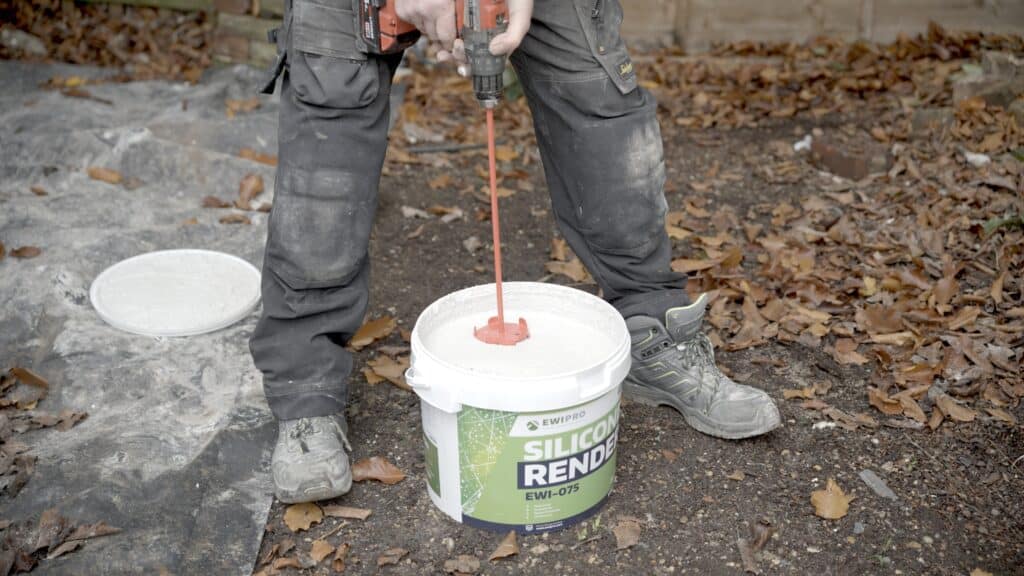
Silicone and Acrylic fibres
These topcoat products receive their name from the additives mixed in during manufacturing; microscopic silicone and acrylic fibres enhance certain bonds within the structure, resulting in stronger and more flexible finishes to your façade.
Silicones are by nature, chemically inactive and also have very low surface tension. Therefore, they are not reactive when it comes to mixing with sand or lime. The major features of silicones are:
- Water repellency – Forms a coating to provide enhanced water repellency.
- Rebound resiliency – Forms a flexible elastic coating that “bounces” back when flexed.
- Transparency – Transparent coating forms on the fibre surface. When mixed in with the other materials, silicone fibres make no impact on the final colour.
- Durability – Forms a flexible film that improves overall strength.
- Weather and heat resistance – Siloxane bonds form at an atomic level, which has a high bond energy. Therefore, they will not break at temperatures up to 200°C and are chemically stable, with high-heat resistance and weather-ability.
The major enhancement that acrylic fibres provide is crack resistance. They chemically bond within the mixture and strengthen the overall durability:
‘The textile-acrylic fibre-reinforced mortar obtained the highest increase when compared to REF 1:1:6, of 64% in impact energy at first crack. These results indicate that the fibre-reinforced cement-lime mortars presented higher impact energy before the first crack occurs […] The highest value was obtained for the textile-acrylic fibre-reinforced cement-lime mortar, which increased by approximately 43% relative to the reference mortar, after ageing. In fact, the fibres act as a bridging mechanism across the cracks, which enhances the deflection capacity without failure and improves the mortars’ ductility.’ (Maia Pederneiras C, Veiga R, de Brito J. Impact Resistance of Rendering Mortars with Natural and Textile-Acrylic Waste Fibres. Fibers. 2022; 10(5):44. https://doi.org/10.3390/fib10050044)
Silicone and Acrylic Renders at EWI Store
EWI Store stock a range of Silicone Renders, all specially designed to offer extra benefits, extending beyond the ever-present ones. These ever-present benefits include flexibility, durability, hydrophobia, and frost resistance. For example, Premium Bio Silicone Render can break down the presence of biological growth actively. Nano-Drex Silicone Render also possesses this ability and as a result, they are extremely popular choices in high vegetation areas.
EWI-010 Acrylic Render maintains many of the features of its Silicone counterpart, but at a lower price point. However, we do not recommend using this product in thermal wall insulation systems that use hard Mineral Wool panels or on wet walls with a high level of technological moisture. In these instances, we suggest that our customers pivot to Silicone Silicate.
All of these renders are highly resistant to UV rays, which ensures that the colour vibrancy is the same for the whole lifespan of the system.
-
Silicone Render (EWI-075) – 25KG
Rated 4.83 out of 5From £83.99 Incl. VATFrom £69.99 Excl. VAT -
Nano Drex Silicone Render (EWI-077) 25kg
Rated 4.57 out of 5From £151.19 Incl. VATFrom £125.99 Excl. VAT -
Premium Bio Silicone Render (EWI-076) – 25kg
Rated 4.00 out of 5From £113.39 Incl. VATFrom £94.49 Excl. VAT -
Silicone Silicate Render (EWI-040) – 25kg
Rated 5.00 out of 5From £71.99 Incl. VATFrom £59.99 Excl. VAT -
Acrylic Render (EWI-010) – 25kg
Rated 4.50 out of 5From £47.99 Incl. VATFrom £39.99 Excl. VAT

Monocouche Scratch
The word ‘monocouche’ is French in origin and translates literally to ‘one coat’. However, most monocouche renders are applied in two passes, which enhances the strength and durability of the chemical bonds. The appeal of monocouche render is that it realistically mimics stonework and can also come in a variety of colours. Moreover, it is designed with water-repellence, breathability, and durability in mind. However, in comparison to Silicone Render, it is more prone to cracking. Whilst monocouche render does have additives that enhance the flexibility and crack resistance of a cementitious product, it cannot match Silicone Renders in that department.
It is an incredibly low-maintenance product and is often available at a lower price point than silicone products. Given that monocouche is a thick coat render, with the final thickness after scratching at around 15-16mm, it can be directly applied onto the substrate. This includes substrates that may not be entirely level.
Mineral Render
Mineral Render is a product we refer to as decorative. The design of the product allows it to be hand or spray machine applied. The compatibility with spray application, along with the accelerated drying time, makes Mineral Render the best option for winter applications. Rendering in the winter is hard enough due to the low temperatures and short spells of sunshine. However, by employing Mineral Render, you can make use of the limited time you may have on-site.
The system relies on it being sealed in with an approved Silicone Paint. If left exposed, it is not hydrophobic or freezeproof. It can also be susceptible to lime bloom which is an unsightly problem for your façade. This is because Mineral render contains Portland cement. Lime bloom occurs in white patches and discolouration where “lime” (calcium hydroxide) settles on the surface of the render due to a chemical reaction. This can cause the formation of crystals on your render which can damage the system.
Treating under the DPC
Underneath the DPC is a crucial component of any building assembly as it prevents any rising damp affecting your substrate. Rising damp and penetrating damp can cause structural and well-being issues, therefore need to be avoided at all costs. As part of our under DPC range, Mosaic Render provides precisely the aesthetic yet waterproof surface necessary. The render is also highly durable and can withstand staining and soiling, which is a consistent issue around the building plinth.
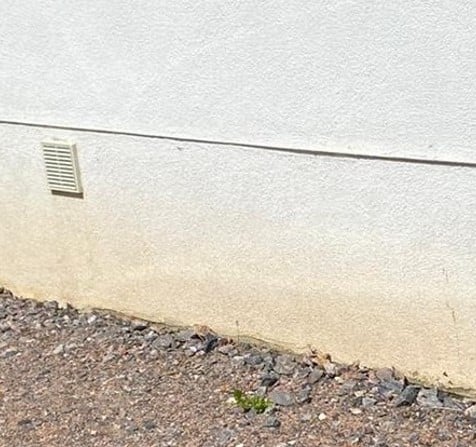
-
Monocouche Render (EWI-090) 25KG
Rated 4.80 out of 5From £14.39 Incl. VATFrom £11.99 Excl. VAT -
Mosaic Render (EWI-050) – 25kg
From £91.19 Incl. VATFrom £75.99 Excl. VAT -
Mineral Render (EWI-060) – 25kg
Rated 3.80 out of 5£24.00 Incl. VAT£20.00 Excl. VAT£27.71 Incl. VAT£23.09 Excl. VAT
So which render is the best?
Ultimately, the answer depends on what you are looking for from your render. Silicone Render will always give you the best overall performance, with unmatched flexibility and breathability. Monocouche Scratch Render offers an attractive option to mimic traditional stonework. Mineral and Mosaic Render are more specialised but also have their place in render-only and external wall insulation systems.
Let us know below which render you think is best!
Facebook
Twitter
LinkedIn
Your cart
Trade Account Login

We use cookies on our website to give you the most relevant experience by remembering your preferences and repeat visits. By clicking “Accept All”, you consent to the use of ALL the cookies. However, you may visit "Cookie Settings" to provide personalised consent.
Manage consent
Privacy Overview
This website uses cookies to improve your experience while you navigate through the website. Out of these, the cookies that are categorized as necessary are stored on your browser as they are essential for the working of basic functionalities of the website. We also use third-party cookies that help us analyze and understand how you use this website. These cookies will be stored in your browser only with your consent. You also have the option to opt-out of these cookies. But opting out of some of these cookies may affect your browsing experience.
Necessary cookies are absolutely essential for the website to function properly. These cookies ensure basic functionalities and security features of the website, anonymously.
| Cookie | Duration | Description |
|---|---|---|
| __stripe_mid | 1 year | This cookie is set by Stripe payment gateway. This cookie is used to enable payment on the website without storing any patment information on a server. |
| __stripe_sid | 30 minutes | This cookie is set by Stripe payment gateway. This cookie is used to enable payment on the website without storing any patment information on a server. |
| _GRECAPTCHA | 5 months 27 days | This cookie is set by the Google recaptcha service to identify bots to protect the website against malicious spam attacks. |
| apbct_cookies_test | session | CleanTalk sets this cookie to prevent spam on comments and forms and act as a complete anti-spam solution and firewall for the site. |
| apbct_page_hits | session | CleanTalk sets this cookie to prevent spam on comments and forms and act as a complete anti-spam solution and firewall for the site. |
| apbct_prev_referer | session | Functional cookie placed by CleanTalk Spam Protect to store referring IDs and prevent unauthorized spam from being sent from the website. |
| apbct_site_landing_ts | session | CleanTalk sets this cookie to prevent spam on comments and forms and act as a complete anti-spam solution and firewall for the site. |
| apbct_site_referer | 3 days | This cookie is placed by CleanTalk Spam Protect to prevent spam and to store the referrer page address which led the user to the website. |
| apbct_timestamp | session | CleanTalk sets this cookie to prevent spam on comments and forms and act as a complete anti-spam solution and firewall for the site. |
| apbct_urls | 3 days | This cookie is placed by CleanTalk Spam Protect to prevent spam and to store the addresses (urls) visited on the website. |
| AWSALBCORS | 7 days | This cookie is managed by Amazon Web Services and is used for load balancing. |
| cookielawinfo-checkbox-advertisement | 1 year | Set by the GDPR Cookie Consent plugin, this cookie is used to record the user consent for the cookies in the "Advertisement" category . |
| cookielawinfo-checkbox-analytics | 11 months | This cookie is set by GDPR Cookie Consent plugin. The cookie is used to store the user consent for the cookies in the category "Analytics". |
| cookielawinfo-checkbox-functional | 11 months | The cookie is set by GDPR cookie consent to record the user consent for the cookies in the category "Functional". |
| cookielawinfo-checkbox-necessary | 11 months | This cookie is set by GDPR Cookie Consent plugin. The cookies is used to store the user consent for the cookies in the category "Necessary". |
| cookielawinfo-checkbox-others | 11 months | This cookie is set by GDPR Cookie Consent plugin. The cookie is used to store the user consent for the cookies in the category "Other. |
| cookielawinfo-checkbox-performance | 11 months | This cookie is set by GDPR Cookie Consent plugin. The cookie is used to store the user consent for the cookies in the category "Performance". |
| ct_checkjs | session | CleanTalk–Used to prevent spam on our comments and forms and acts as a complete anti-spam solution and firewall for this site. |
| ct_fkp_timestamp | session | CleanTalk sets this cookie to prevent spam on the site's comments/forms, and to act as a complete anti-spam solution and firewall for the site. |
| ct_pointer_data | session | CleanTalk sets this cookie to prevent spam on the site's comments/forms, and to act as a complete anti-spam solution and firewall for the site. |
| ct_ps_timestamp | session | CleanTalk sets this cookie to prevent spam on the site's comments/forms, and to act as a complete anti-spam solution and firewall for the site. |
| ct_sfw_pass_key | 1 month | CleanTalk sets this cookie to prevent spam on comments and forms and act as a complete anti-spam solution and firewall for the site. |
| ct_timezone | session | CleanTalk–Used to prevent spam on our comments and forms and acts as a complete anti-spam solution and firewall for this site. |
| elementor | never | This cookie is used by the website's WordPress theme. It allows the website owner to implement or change the website's content in real-time. |
| viewed_cookie_policy | 11 months | The cookie is set by the GDPR Cookie Consent plugin and is used to store whether or not user has consented to the use of cookies. It does not store any personal data. |
Functional cookies help to perform certain functionalities like sharing the content of the website on social media platforms, collect feedbacks, and other third-party features.
| Cookie | Duration | Description |
|---|---|---|
| __zlcmid | 1 year | This cookie is used by Zendesk live chat and is used to store the live chat ID. |
| bcookie | 2 years | LinkedIn sets this cookie from LinkedIn share buttons and ad tags to recognize browser ID. |
| bscookie | 2 years | LinkedIn sets this cookie to store performed actions on the website. |
| lang | session | LinkedIn sets this cookie to remember a user's language setting. |
| lidc | 1 day | LinkedIn sets the lidc cookie to facilitate data center selection. |
| UserMatchHistory | 1 month | LinkedIn sets this cookie for LinkedIn Ads ID syncing. |
Performance cookies are used to understand and analyze the key performance indexes of the website which helps in delivering a better user experience for the visitors.
| Cookie | Duration | Description |
|---|---|---|
| __utma | 2 years | This cookie is set by Google Analytics and is used to distinguish users and sessions. The cookie is created when the JavaScript library executes and there are no existing __utma cookies. The cookie is updated every time data is sent to Google Analytics. |
| __utmb | 30 minutes | Google Analytics sets this cookie, to determine new sessions/visits. __utmb cookie is created when the JavaScript library executes and there are no existing __utma cookies. It is updated every time data is sent to Google Analytics. |
| __utmc | session | The cookie is set by Google Analytics and is deleted when the user closes the browser. It is used to enable interoperability with urchin.js, which is an older version of Google Analytics and is used in conjunction with the __utmb cookie to determine new sessions/visits. |
| __utmt | 10 minutes | Google Analytics sets this cookie to inhibit request rate. |
| __utmv | 2 years | The __utmv cookie is set on the user's device, to enable Google Analytics to classify the visitor. |
| __utmz | 6 months | Google Analytics sets this cookie to store the traffic source or campaign by which the visitor reached the site. |
| sib_cuid | 6 months | Purechat uses this cookie to send data to purechat.com, to connect visitors to the reservation team and track visitors to stay on portal. |
| SRM_B | 1 year 24 days | Used by Microsoft Advertising as a unique ID for visitors. |
Analytical cookies are used to understand how visitors interact with the website. These cookies help provide information on metrics the number of visitors, bounce rate, traffic source, etc.
| Cookie | Duration | Description |
|---|---|---|
| _ga | 2 years | The _ga cookie, installed by Google Analytics, calculates visitor, session and campaign data and also keeps track of site usage for the site's analytics report. The cookie stores information anonymously and assigns a randomly generated number to recognize unique visitors. |
| _gat_gtag_UA_61069204_2 | 1 minute | Set by Google to distinguish users. |
| _gat_UA-61069204-2 | 1 minute | A variation of the _gat cookie set by Google Analytics and Google Tag Manager to allow website owners to track visitor behaviour and measure site performance. The pattern element in the name contains the unique identity number of the account or website it relates to. |
| _gcl_au | 3 months | Provided by Google Tag Manager to experiment advertisement efficiency of websites using their services. |
| _gid | 1 day | Installed by Google Analytics, _gid cookie stores information on how visitors use a website, while also creating an analytics report of the website's performance. Some of the data that are collected include the number of visitors, their source, and the pages they visit anonymously. |
| _uetsid | 1 day | This cookies are used to collect analytical information about how visitors use the website. This information is used to compile report and improve site. |
| CONSENT | 2 years | YouTube sets this cookie via embedded youtube-videos and registers anonymous statistical data. |
Advertisement cookies are used to provide visitors with relevant ads and marketing campaigns. These cookies track visitors across websites and collect information to provide customized ads.
| Cookie | Duration | Description |
|---|---|---|
| _fbp | 3 months | This cookie is set by Facebook to display advertisements when either on Facebook or on a digital platform powered by Facebook advertising, after visiting the website. |
| ANONCHK | 10 minutes | The ANONCHK cookie, set by Bing, is used to store a user's session ID and also verify the clicks from ads on the Bing search engine. The cookie helps in reporting and personalization as well. |
| fr | 3 months | Facebook sets this cookie to show relevant advertisements to users by tracking user behaviour across the web, on sites that have Facebook pixel or Facebook social plugin. |
| MUID | 1 year 24 days | Bing sets this cookie to recognize unique web browsers visiting Microsoft sites. This cookie is used for advertising, site analytics, and other operations. |
| NID | 6 months | NID cookie, set by Google, is used for advertising purposes; to limit the number of times the user sees an ad, to mute unwanted ads, and to measure the effectiveness of ads. |
| test_cookie | 15 minutes | The test_cookie is set by doubleclick.net and is used to determine if the user's browser supports cookies. |
| uuid | 6 months | MediaMath sets this cookie to avoid the same ads from being shown repeatedly and for relevant advertising. |
| VISITOR_INFO1_LIVE | 5 months 27 days | A cookie set by YouTube to measure bandwidth that determines whether the user gets the new or old player interface. |
| YSC | session | YSC cookie is set by Youtube and is used to track the views of embedded videos on Youtube pages. |
| yt-remote-connected-devices | never | YouTube sets this cookie to store the video preferences of the user using embedded YouTube video. |
| yt-remote-device-id | never | YouTube sets this cookie to store the video preferences of the user using embedded YouTube video. |
| yt.innertube::nextId | never | This cookie, set by YouTube, registers a unique ID to store data on what videos from YouTube the user has seen. |
| yt.innertube::requests | never | This cookie, set by YouTube, registers a unique ID to store data on what videos from YouTube the user has seen. |
Other uncategorized cookies are those that are being analyzed and have not been classified into a category as yet.
| Cookie | Duration | Description |
|---|---|---|
| _clck | 1 year | No description |
| _clsk | 1 day | No description |
| _uetvid | 1 year 24 days | No description available. |
| AnalyticsSyncHistory | 1 month | No description |
| apbct_pixel_url | session | No description |
| apbct_visible_fields_0 | session | No description |
| apbct_visible_fields_1 | session | No description |
| apbct_visible_fields_10 | session | No description |
| apbct_visible_fields_2 | session | No description |
| apbct_visible_fields_3 | session | No description |
| apbct_visible_fields_4 | session | No description |
| apbct_visible_fields_5 | session | No description |
| apbct_visible_fields_6 | session | No description |
| apbct_visible_fields_7 | session | No description |
| apbct_visible_fields_8 | session | No description |
| apbct_visible_fields_9 | session | No description |
| ct_checked_emails | session | No description |
| ct_has_scrolled | session | No description |
| ct_mouse_moved | session | No description |
| ct_screen_info | session | No description |
| ictf_master | never | No description available. |
| li_gc | 2 years | No description |
| m | 2 years | No description available. |
| SM | session | No description available. |
| testinfinitycookie | session | No description |
| woocommerce_show_tax | 7 days | No description available. |
| wp_woocommerce_session_c5ac76b408021294cb56bcc27eddf8a1 | 2 days | No description |


